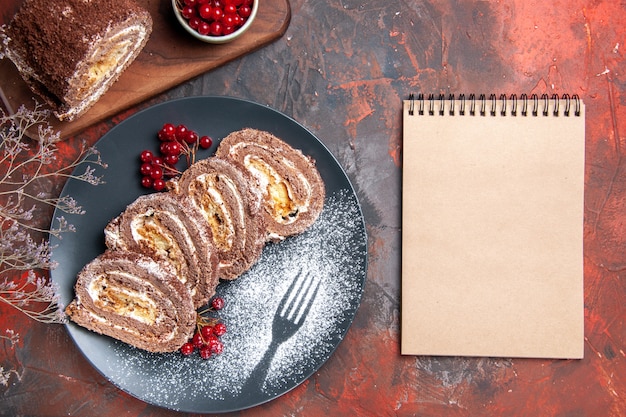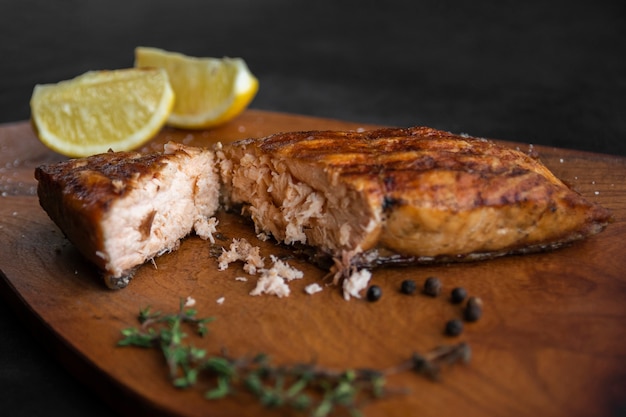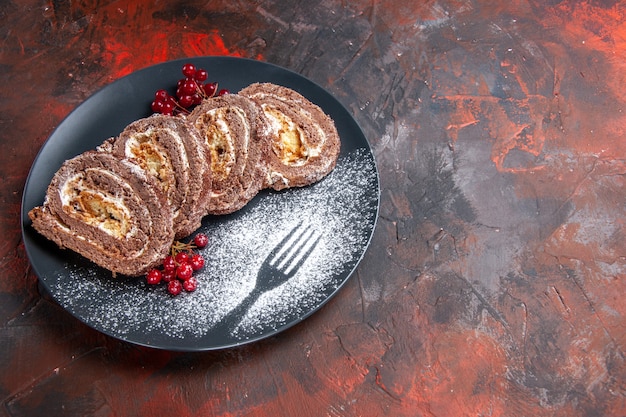There's a certain magic to a perfectly roasted tenderloin. It's not just the incredible flavor, it's the whole experience - the anticipation as the aroma fills your kitchen, the celebratory mood it sets for a special occasion, and the joy of seeing everyone gather around the table, eyes sparkling with excitement. And let me tell you, I've been there, done that, and have the delicious memories to prove it!
Over the years, I've perfected my tenderloin roasting technique, and I'm excited to share it with you. This isn't just a recipe, it's a journey. It's about understanding the intricacies of the cut, mastering the art of seasoning, and knowing the subtle nuances of roasting that elevate a simple piece of meat to an unforgettable culinary masterpiece. So, put on your apron, gather your ingredients, and let's embark on this delicious adventure together!
(Part 1) Choosing the Perfect Cut

choosing the right cut is the foundation of any successful tenderloin roast. We're not talking about the thin, cutlets you often see at the supermarket. We're after a good-sized piece, usually about 2-3 pounds, with beautiful marbling – that's the key to flavor and tenderness. And trust me, you'll know it when you see it!
Getting to Know Your Tenderloin
Let's break down the different parts of the tenderloin. The whole thing is divided into two sections:
- The "Butt" or "Head": This is the wider, thicker end, often considered the prime cut. It's packed with more fat, resulting in a richer, more tender flavor. It's the classic choice for a tenderloin roast.
- The "Tail" or "Sirloin Tip": This is the narrower, thinner end, which tends to be leaner and slightly less tender. It's still delicious, but it's best used in other dishes like steaks or stir-fries.
For a classic roast, we're going for the whole tenderloin, or at least a good section from the "butt". Now, you can find it already tied, but I prefer to tie it myself. It gives me a chance to trim off any excess fat and ensure that the roast is nice and even.
The Art of Trimming
Before we get to the tying, let's do some careful trimming. You'll see that layer of fat covering the tenderloin. Now, we want to remove most of it, but not all. Remember, fat is flavor! We want to keep a thin layer (maybe 1/4 inch) to help keep the meat moist during cooking.
Here's where I use my favorite trick: I use a sharp knife to carefully score the fat in a criss-cross pattern. This allows the fat to render more evenly, preventing it from becoming a big, greasy puddle at the bottom of the pan. It's a simple but genius move that makes a world of difference in the final result.
(Part 2) The Importance of Seasoning

You've got your perfectly trimmed tenderloin, now comes the exciting part - seasoning! This is where you can unleash your creativity and really make your roast stand out. My philosophy? Simple is often best. I love to let the natural beef flavor shine through, so I use a few key ingredients that enhance its depth and complexity.
The Basics
Here's my go-to seasoning blend, a tried-and-true combination that never disappoints:
- Salt: Always use good quality kosher salt. It's coarser than table salt, providing better flavor and dissolving more evenly. Don't be shy with the salt – it's essential for bringing out the best in the beef!
- Black Pepper: Freshly ground black pepper is a must! It's so much more flavorful and aromatic than pre-ground. It adds a delightful bit of spice to the tenderloin.
- Garlic Powder: Just a touch of garlic powder adds depth and rounds out the flavor profile, creating a wonderfully savory aroma.
- Onion Powder: Another subtle but crucial ingredient. It adds a hint of sweetness that balances the savory notes perfectly.
Mix these ingredients in a small bowl, then rub it all over the tenderloin, ensuring you get into every nook and cranny. You want a generous coating to create an incredible crust during roasting.
Adding a Touch of Luxury
Now, if you're feeling extra fancy, you can add some luxurious extras to your seasoning blend. I love to include a pinch of fresh herbs like rosemary, thyme, or sage. They add a lovely aroma and a touch of complexity to the flavor. A sprinkle of dried herbs will do in a pinch, but fresh herbs always provide the most vibrant flavors.
(Part 3) The Art of Roasting

The moment you've been waiting for is finally here - the actual roasting. Don't worry, it's not as complicated as it seems. Follow my step-by-step guide, and you'll be on your way to creating a truly unforgettable tenderloin roast.
Preheating the Oven
First, preheat your oven to 425°F (220°C). This high heat will give the tenderloin a beautiful sear on the outside and cook it quickly, resulting in a tender and juicy roast.
The Searing Process
Once the oven is preheated, it's time to sear the tenderloin. This is the secret to getting that irresistible crust and locking in all those precious juices. Heat a heavy-bottomed skillet (cast iron is ideal) over medium-high heat. Add a few tablespoons of oil, and once it's shimmering, carefully place the tenderloin in the skillet. Sear it for 3-4 minutes on each side, making sure to get a beautiful golden-brown color.
Here's a little trick I've learned over the years: after searing, I add a couple of tablespoons of butter to the skillet. It adds extra richness and flavor to the roast. Just make sure to rotate the tenderloin every minute or so to ensure it browns evenly on all sides.
The Final Roast
Now, transfer the seared tenderloin to a roasting pan. Add a cup of beef broth or water to the bottom of the pan. This will help keep the roast moist and create flavorful pan drippings. Place the roast in the preheated oven and cook for 15-20 minutes, or until a meat thermometer inserted into the thickest part of the roast registers 135°F (57°C) for medium-rare.
It's crucial to check the temperature of the roast frequently, as cooking times can vary depending on the size and thickness of the tenderloin. Remember, a meat thermometer is your best friend!
(Part 4) Resting and Slicing
The final step before serving is resting the tenderloin. It's a crucial step that many people skip, but it makes all the difference. Resting allows the juices to redistribute throughout the meat, resulting in a more flavorful and tender roast.
The Importance of Resting
Take the roast out of the oven and place it on a cutting board. Cover it loosely with foil and let it rest for 15-20 minutes. During this time, the internal temperature will continue to rise slightly, and the juices will redistribute, making the roast perfectly cooked and juicy.
Slicing Perfection
After resting, it's time to slice the roast. I find it easier to slice the tenderloin against the grain, which means slicing across the direction of the muscle fibers. This will create more tender slices. Start by slicing off the ends of the roast, and then slice the rest of the roast into 1/2-inch thick slices. It's a good idea to have a sharp knife for this, making the slicing process much smoother and easier.
(Part 5) Sauces and Accompaniments
Now, we're getting to the fun part: the sauces and accompaniments. I love to create a simple, elegant sauce that complements the richness of the tenderloin, enhancing its overall flavor profile.
The Pan Drippings Sauce
One of my favorite sauces is made using the pan drippings from the roasting process. It's incredibly flavorful and incredibly easy to make.
Here's how:
- Carefully pour off the excess fat from the roasting pan into a heat-proof measuring cup or bowl. You want to keep the delicious bits at the bottom for the sauce!
- Add a tablespoon of butter to the remaining drippings in the pan.
- Place the pan over medium heat and scrape up any browned bits from the bottom of the pan. This is where the true flavor resides.
- Add a tablespoon of flour to the pan and whisk it into the drippings until smooth. This will help thicken the sauce.
- Gradually whisk in the reserved broth or water, along with a tablespoon of red wine vinegar, until the sauce is smooth and slightly thickened. The vinegar adds a touch of acidity that balances the richness of the dish.
- Season to taste with salt and pepper.
You can add a splash of red wine to the sauce for extra depth of flavor, or even a dollop of Dijon mustard for a tangy kick.
Delicious Accompaniments
No tenderloin roast is complete without some delicious accompaniments! Here are some of my favorites:
- Roasted Vegetables: I love to roast a mix of vegetables like asparagus, Brussels sprouts, and carrots. They're so flavorful and pair beautifully with the tenderloin. The roasting process brings out their natural sweetness and creates a delightful contrast in texture.
- mashed potatoes: creamy mashed potatoes are a classic accompaniment for a tenderloin roast. I like to add a little bit of butter and cream for extra richness. You can also experiment with different herbs and spices, like chives or parsley, to add a touch of flavor.
- green beans: fresh green beans are a refreshing and healthy side dish for a tenderloin roast. I like to saute them with garlic and olive oil. A simple sprinkle of salt and pepper enhances their flavor, and a squeeze of lemon juice adds a bright touch.
- Roasted Garlic: This adds a subtle, sweet, and pungent note that complements the tenderloin beautifully. You can simply roast whole heads of garlic, then squeeze out the soft cloves and serve them alongside the meat.
(Part 6) Serving with Style
Now, the moment of truth: serving your masterpiece. This is where you get to show off all your culinary skills and present your dish with style.
Presentation Matters
I love to arrange the sliced tenderloin on a platter with the accompanying sauces and vegetables. Think about colors and textures – create a visually appealing presentation by using different colors and shapes of vegetables, and by arranging the sauces in a decorative way. The beauty of the dish is as much about the presentation as it is about the taste.
Don't Forget the Garnish
A garnish can add a touch of elegance to your presentation. Some classic garnishes for tenderloin include fresh herbs, lemon wedges, or a sprinkle of parsley. You can also use a few sprigs of rosemary or thyme for a rustic touch.
(Part 7) Variations and Experimentation
So now you know the basics of roasting a tenderloin. But the beauty of cooking is that you can always experiment and try new things. Don't be afraid to get creative and try out different flavors and techniques.
Flavor Infusions
One way to add extra flavor to your tenderloin is to infuse it with herbs or spices. You can try wrapping the tenderloin in bacon, or rubbing it with a blend of herbs and spices before roasting. I've also had great success with a garlic-rosemary butter that I rub all over the meat. This adds a wonderful aroma and a burst of flavor that is simply irresistible.
Different Cooking Methods
You can also experiment with different cooking methods. If you're feeling adventurous, try grilling your tenderloin. Just remember to use a grill with high, even heat, and make sure to sear the tenderloin well before grilling it. If you have access to a smoker, you can also create a delicious smoked tenderloin. It's a great way to add a smoky depth of flavor that is unique and unforgettable.
(Part 8) Storing and Reheating
If you're lucky enough to have leftovers, you'll want to store them properly to maintain their quality.
Refrigerate Properly
Store the cooked tenderloin in an airtight container in the refrigerator for up to 3-4 days. This will prevent it from drying out and keep the flavors locked in.
Reheating Perfection
To reheat your tenderloin, you can use the oven, a skillet, or a microwave. I prefer to reheat it in the oven, as it helps to maintain its moisture. Preheat your oven to 350°F (175°C) and reheat the tenderloin for 10-15 minutes, or until it is heated through.
If you're using a skillet, heat a little bit of oil in the skillet over medium heat and cook the tenderloin for a few minutes on each side, or until it is heated through.
If you're using a microwave, reheat the tenderloin in 30-second intervals, or until it is heated through. Be careful not to overheat it, as this can dry it out.
FAQs
What is the best way to determine if a tenderloin is cooked to the desired doneness?
The best way to determine the doneness of a tenderloin is to use a meat thermometer. A meat thermometer will give you an accurate reading of the internal temperature of the roast, which is the most reliable way to determine if it's cooked to the desired doneness. For medium-rare, the internal temperature should be 135°F (57°C). For medium, it should be 140°F (60°C). For medium-well, it should be 145°F (63°C). And for well-done, it should be 150°F (65°C).
Can I use a different kind of meat for this recipe?
While a tenderloin is the classic choice for this recipe, you can use other cuts of meat, such as ribeye or strip steak. Just be sure to adjust the cooking time accordingly, as different cuts of meat cook at different rates. You might also need to adjust the seasoning blend to complement the specific flavor profile of the chosen cut.
How can I make my tenderloin roast more flavorful?
There are a few ways to make your tenderloin roast more flavorful. One is to infuse it with herbs and spices before roasting. You can also try wrapping the tenderloin in bacon, or rubbing it with a blend of herbs and spices before roasting. Adding a flavorful marinade or a flavorful rub before roasting is another way to add depth and complexity to the flavor of the meat.
How long can I store cooked tenderloin in the refrigerator?
Cooked tenderloin can be stored in the refrigerator for up to 3-4 days. Store it in an airtight container to prevent it from drying out. It's also a good idea to label the container with the date so you know how long it's been stored.
What are some creative ways to serve tenderloin?
There are endless possibilities when it comes to serving tenderloin. You can serve it classic style with mashed potatoes and green beans, or get creative with different sauces and accompaniments. For example, you could serve it with a red wine sauce and roasted vegetables, or with a Dijon mustard sauce and a side of risotto. You can also slice the tenderloin and use it in sandwiches, salads, or other dishes. The possibilities are truly endless!
Everyone is watching

Perfect Rice Every Time: The Ultimate Guide to Cooking Rice
Cooking TipsAs a self-proclaimed foodie, I've always been a bit obsessed with rice. It's the foundation of countless cuisi...

Prime Rib Roast Cooking Time Chart: Per Pound Guide
Cooking TipsPrime rib roast. Just the name conjures images of lavish dinners, crackling fires, and hearty laughter. It’s ...

The Ultimate Guide to Cooking Asparagus: Tips, Techniques, and Recipes
Cooking TipsAsparagus. The mere mention of this spring delicacy conjures up images of vibrant green spears, crisp and burs...

Ultimate Guide to Cooking the Perfect Thanksgiving Turkey
Cooking TipsThanksgiving. Just the word conjures up images of overflowing tables laden with delicious food, the scent of r...

How Long to Bake Potatoes in the Oven (Perfect Every Time)
Cooking TipsBaked potatoes are a staple in my kitchen. They're incredibly versatile, delicious, and surprisingly easy to m...
